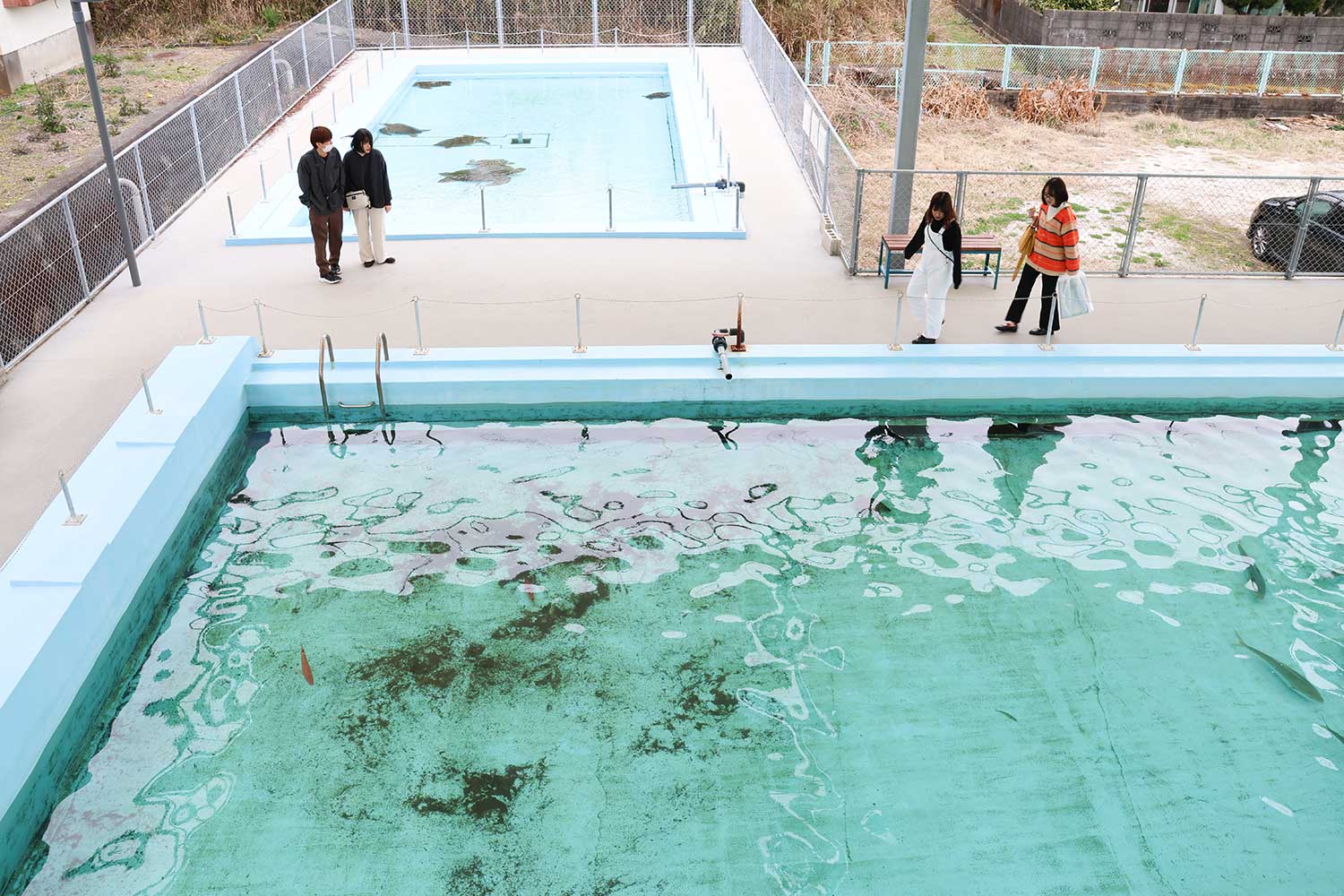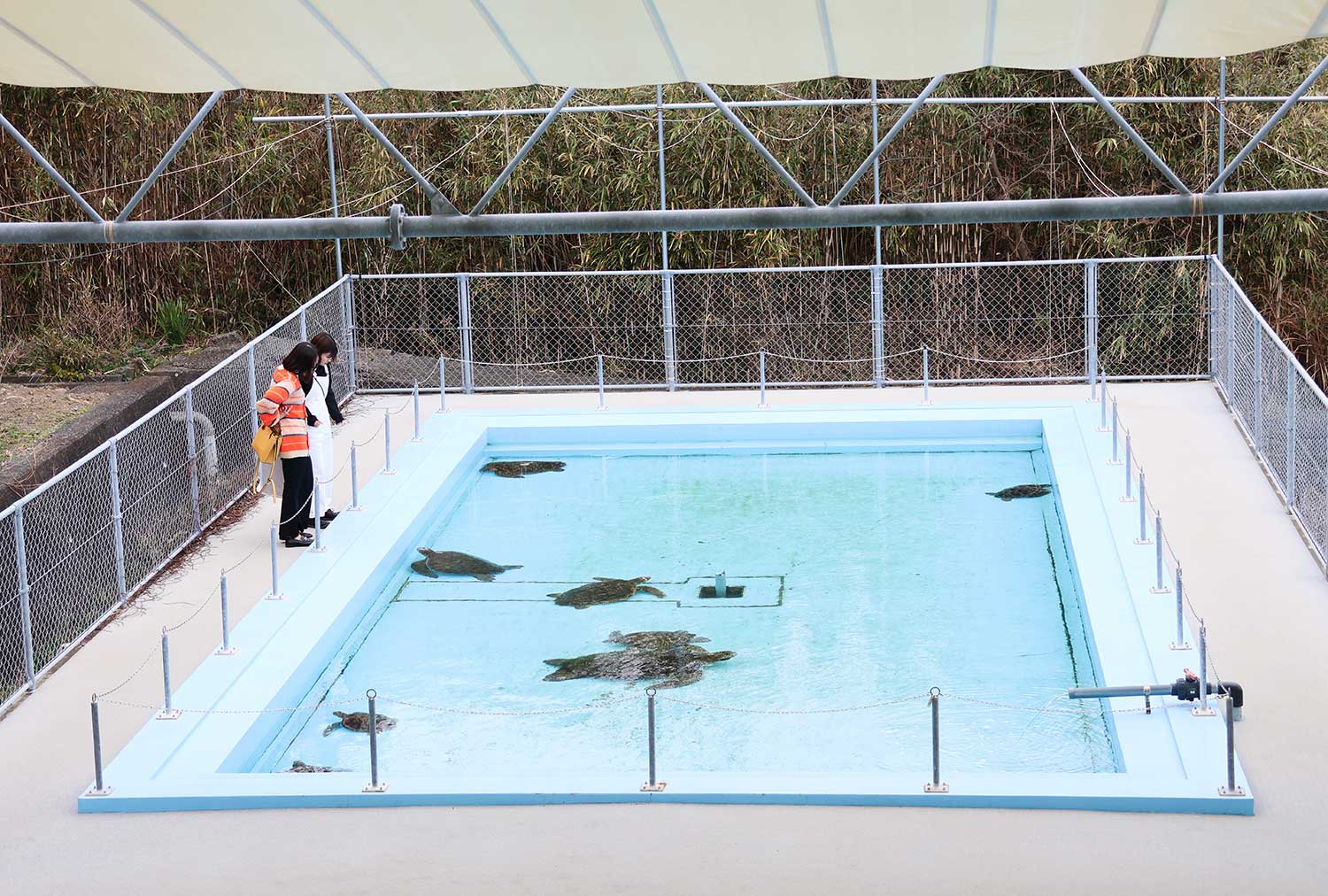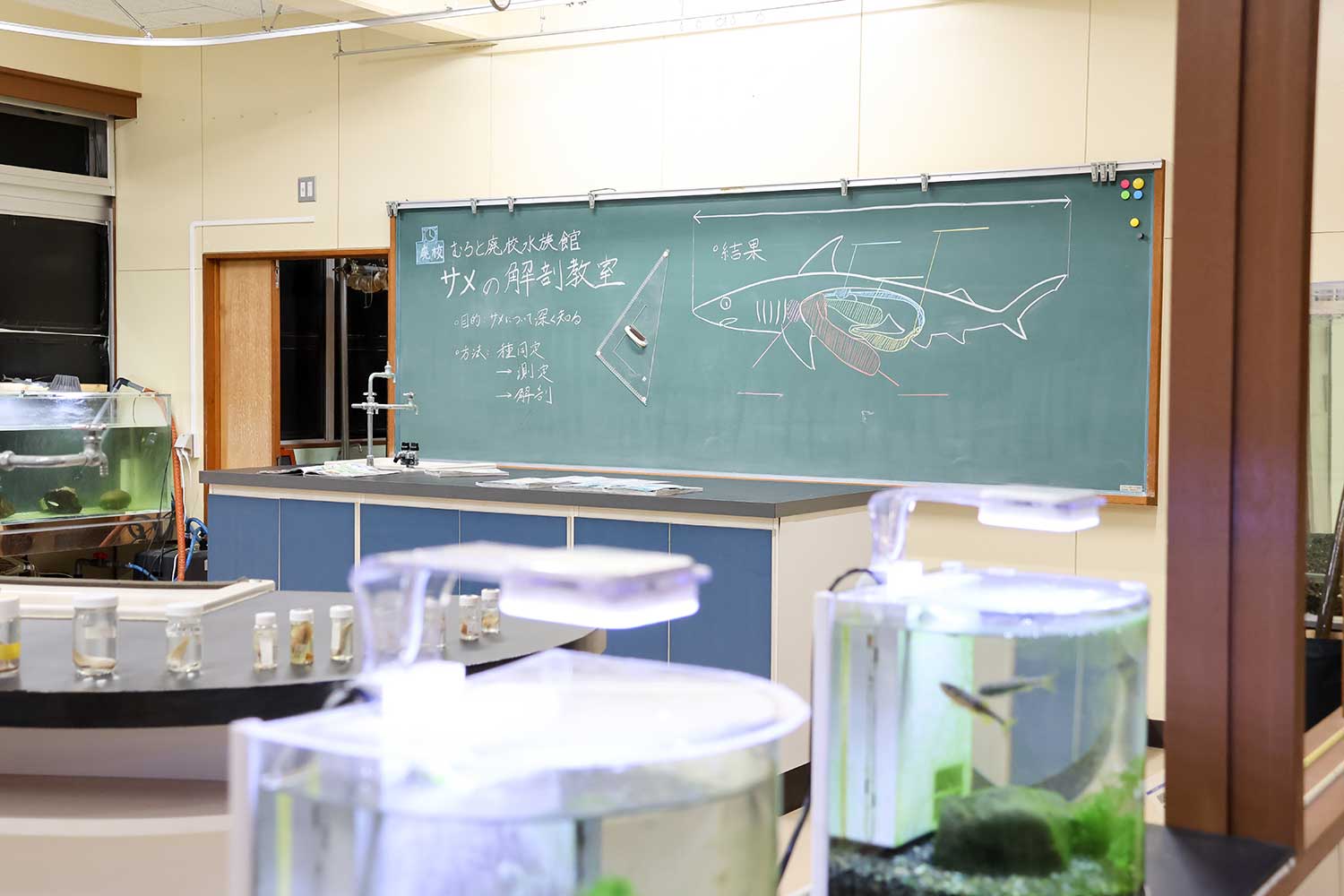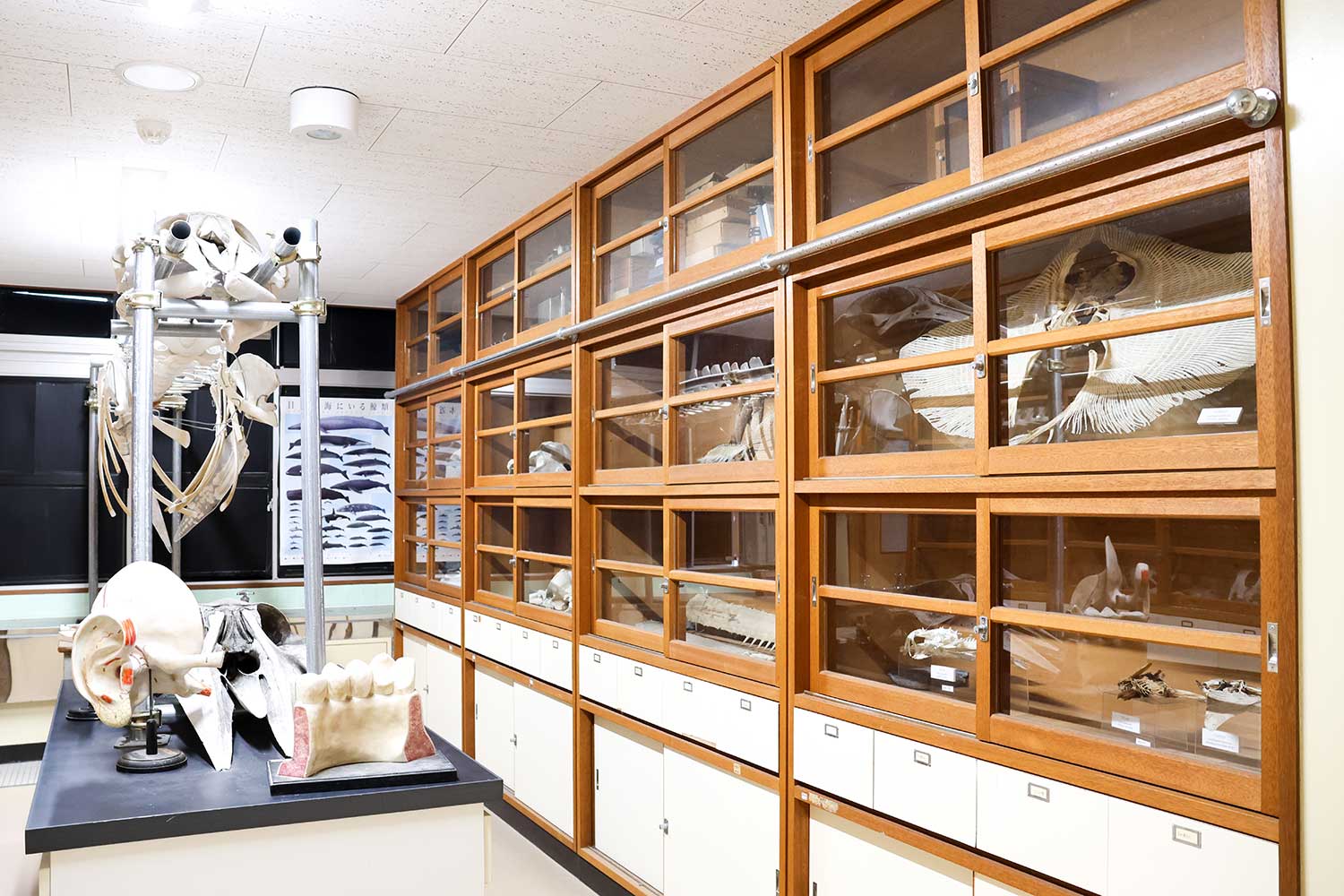
Sea

Community
Popular Aquarium Introduces Only Local Marine Life, Utilizing a Closed School Building
Great ideas that leverage local resources attracting tourists to the region
Sea Turtle Association of Japan
(Kochi Prefecture)
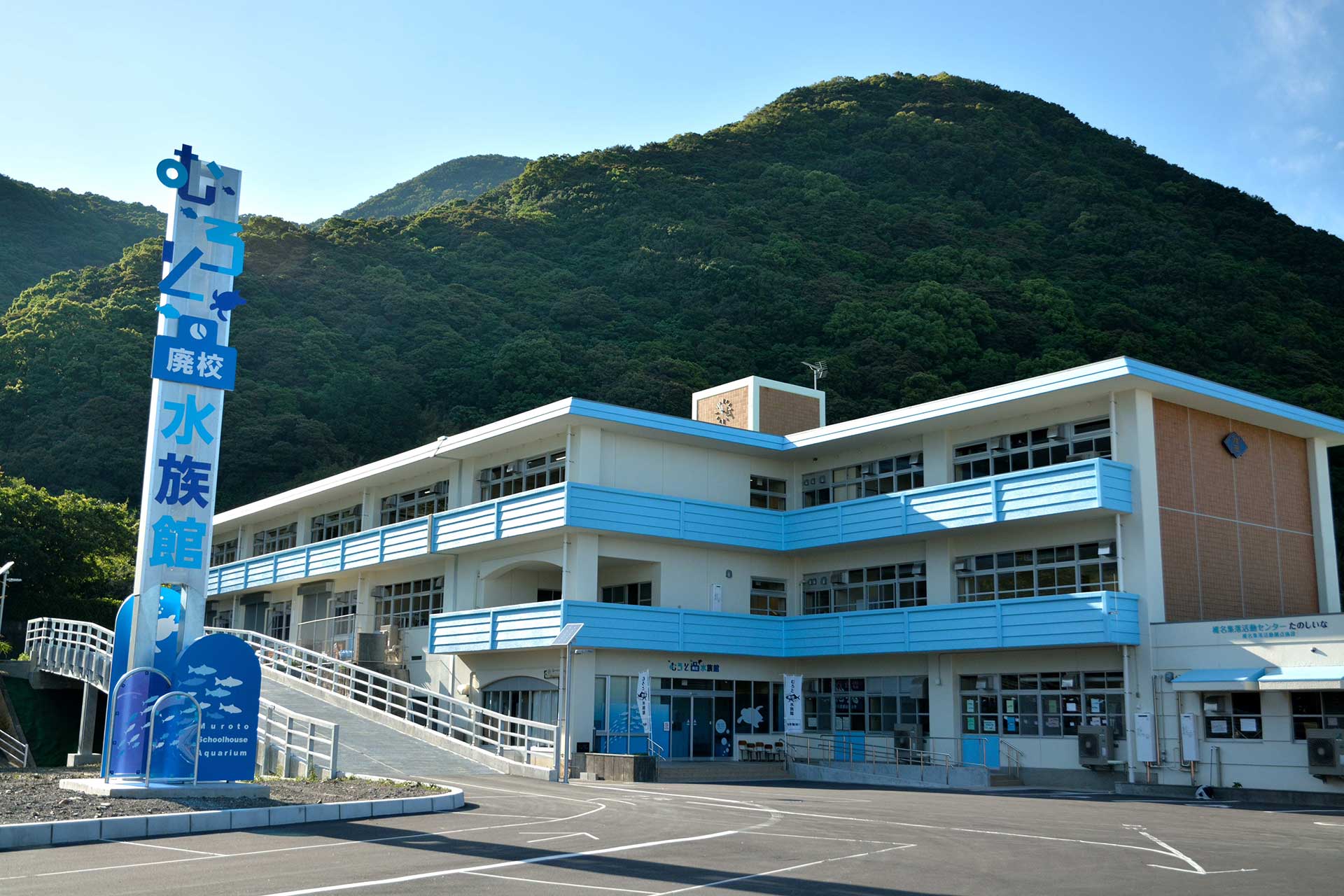
Overview
The Muroto Schoolhouse Aquarium in Muroto City, Kochi Prefecture, Japan, utilizes a former elementary school building to exhibit marine life caught in fixed nets off the coast of the city. Operated by the NPO Sea Turtle Association of Japan since 2018, the aquarium also serves as a research institution for sea turtles and functions as a museum. While the number of exhibited species is limited to about 50, efforts to entertain visitors have led to an increase in visitors through various creative means. Additionally, efforts have been made to operate in a manner that generates economic benefits for the local community and residents.
Located along the Pacific coast, this aquarium utilizes an original school building, including classrooms, science lab, and library. Visitors can explore the school building while learning about local marine ecosystems, much like in a real school setting. In 2024, it was officially recognized as a museum by the government, and it is expected to further contribute to the revitalization of the region and to help in the resolution of societal issues through activities such as collecting and exhibiting materials, as well as educational and research endeavors.
Successful outcomes
- In the first year, the number of visitors was approximately 170,000. Considering Muroto City's population of around 13,600 (as of April 2018), this represents more than 12 times the local population. Despite a halving of visitors due to the COVID-19 pandemic, numbers are gradually recovering.
- Souvenir models of yellowtail, mackerel, and shark (priced at 1,000 yen each) developed by the aquarium have become popular, generating sales of approximately 110,000 units (totaling over 100 million yen) in five years.
- Regular events for both children and adults are held, fulfilling the role of a social education facility. Examples include events such as measuring and releasing sea turtles, observing nocturnal marine life at the aquarium, calligraphy using squid ink, cooking demonstrations with sunfish, and opportunities for visitors to experience the work of aquarium staff.
- The aquarium employs eight staff members. Internship applicants come from across the country.

The key to attracting visitors: Planning initiatives that staff enjoy
In walking through the corridors of the Muroto Schoolhouse Aquarium, one can glimpse various-sized tanks and an outdoor pool where mullet, spiny lobsters, mackerel, sea turtles, and other marine creatures all gracefully swim. In one corner, there’s a somewhat ironic display of marine plastic waste, alongside specimens introduced as “new members of the sea.” Among these displays, the most-popular attraction is the shimmering school of blue-gray mullet.
All the creatures on display are sourced by the staff, who visit three local fishing ports every morning to collect them, without actually having to purchase any of them. Additionally, once the research on sea turtles is completed, they are released back into the sea. If any creature outgrows their tank size, they are exhibited for about a week before being returned to the ocean while still in good health.
The director of the aquarium, Mr. Motoki WAKATSUKI, comments: “This aquarium is unique in Japan, as it only showcases what is found locally in the region. Travelers who venture to remote areas such as Muroto are likely to be interested in seeing what this region has to offer. It’s not about the sheer variety of species on display. Each creature, when observed closely, is fascinating in its own right.”
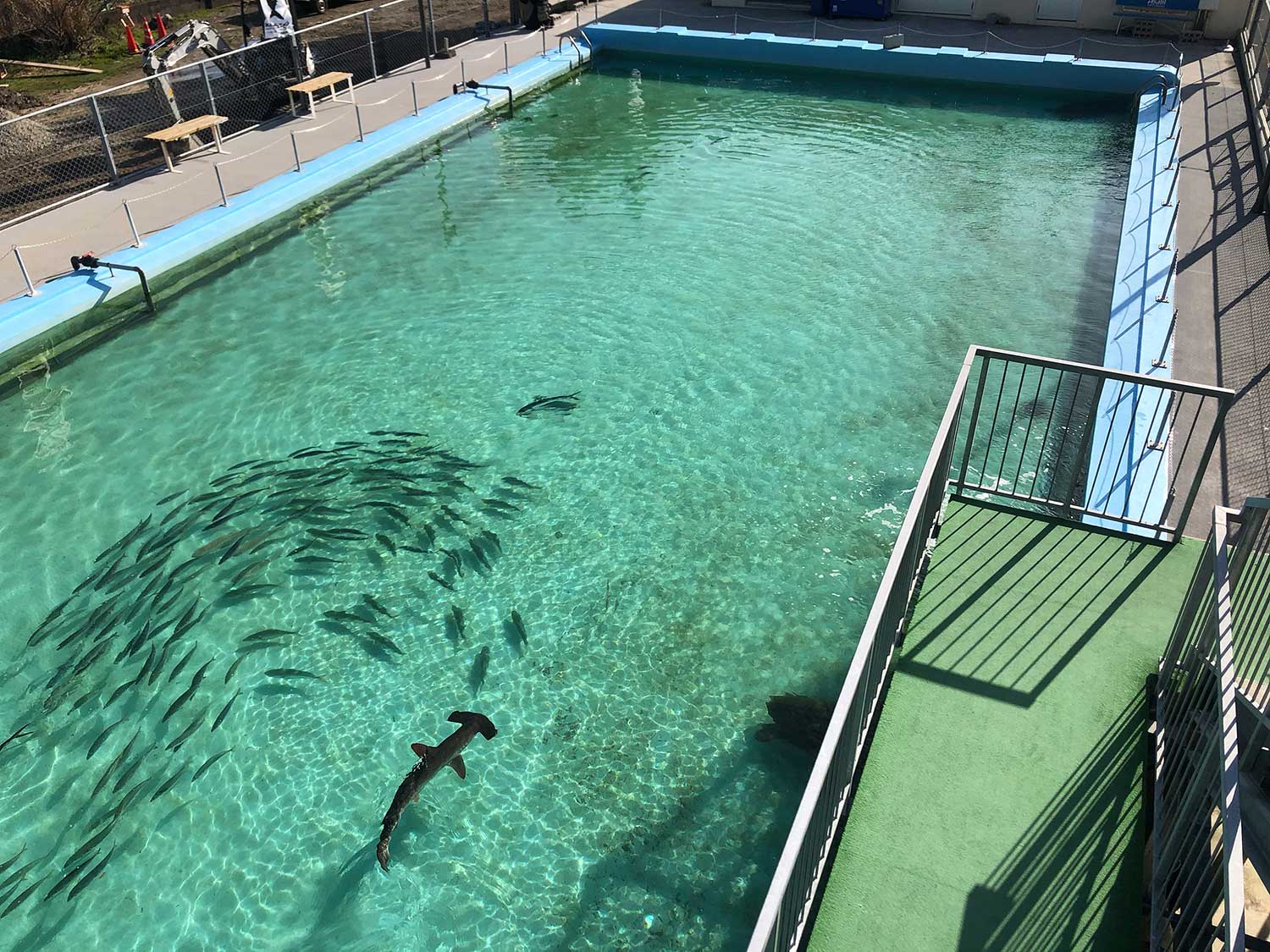
Mr. WAKATSUKI has been instrumental in creating opportunities for observing and sometimes interacting with the local marine life and ecosystem, fostering the growth of the aquarium with innovative ideas.
Despite now being a popular tourist attraction in Kochi Prefecture, the aquarium faced opposition from some citizens before opening. There were concerns that building an aquarium would be futile, with no guarantee of attracting visitors, leading to wasted taxpayer money. (In Japan, it’s not uncommon for local governments or the national government to invest tax money into constructing public facilities for the purpose of regional development and to subsidize the annual facility management costs.)
To address these concerns, Mr. WAKATSUKI and his team minimized costs by repurposing the school building as a marine school for the aquarium and opting not to receive subsidies for operational expenses. The renovation of the school building, which had been abandoned for 17 years and was in a state of disrepair to the point where the ceiling was collapsing, as well as the installation of tanks, were covered by a total budget of 550 million yen secured by municipal officials from the national and prefectural governments.
Overshadowing the negative preconceptions were the approximately 170,000 visitors that the aquarium saw in its first year and the approximately 150,000 visitors seen in its second year. And entrance fees are set lower compared to other aquariums in the prefecture, at 600 yen for adults, 300 yen for elementary and middle school students, and free for infants and toddlers. Mr. WAKATSUKI explains this decision as aiming to encourage visitors to return easily and take their time observing the various creatures.
What drives the popularity is Mr. WAKATSUKI’s creative exhibition and event planning, along with daily social media posts by staff, where they share their expertise and sometimes humorously depict the daily life of marine creatures and the aquarium. “It’s important to do things that we find enjoyable. When we’re having fun, people tend to gather,” Mr. WAKATSUKI emphasizes.
Behind Mr. WAKATSUKI’s ability to come up with various initiatives lies his daily information-gathering. He makes it routine to skim through several newspapers each day, searching for interesting endeavors, and always has his thinking cap on for good ideas while out and about. However, rather than just imitating what he finds, he constantly ponders on how to adapt what he sees to further suit the regional characteristics of Muroto.
Muroto Schoolhouse Aquarium (Muroto Haiko Suizokukan)
Sea Turtle Association of Japan
https://visitkochijapan.com/en/see-and-do/10005
Back to Home
